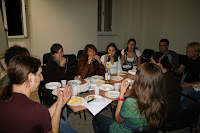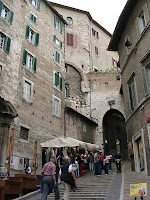
Every year from November 1st through the 5th, Perugia hosts a local fair, Fiera dei Morti, in celebration of “Tutti Santi” or All Saints Day.
This year, the fair will be held as usual, down at Pian di Massiano, near the stadium as well as in the historical city center. At the stadium they’ll have the usual rides, fair foods and gigantic market where you can find clothes, home goods, local specialties as well as other foods from around Italy. The market continues into the city center with stands in Piazza della Repubblica, Piazza Matteotti, along Via Indipenenza and down Via Oberdan.
Take the mini-metro down and get off at the last stop “Pian di Massiano” to ride the rides and see the sprawling market. Otherwise stop off in Perugia’s main piazzas to browse around. But don’t miss out, it only lasts five days!


 Frescoes are everpresent in Italy, and practically everyone gets to the point that they wouldn’t cross a street to see another “early work of a minor Tuscan master.” But who wouldn’t cross a room to
Frescoes are everpresent in Italy, and practically everyone gets to the point that they wouldn’t cross a street to see another “early work of a minor Tuscan master.” But who wouldn’t cross a room to  The obvious translation of this sentence is, “A coffee, please,” but if you’re expecting a Starbucks-size jug o’ Joe, you’ll be surprised in Italy. The standard coffee here is the
The obvious translation of this sentence is, “A coffee, please,” but if you’re expecting a Starbucks-size jug o’ Joe, you’ll be surprised in Italy. The standard coffee here is the 
 Summer is over, and the next season is here. Italian uses
Summer is over, and the next season is here. Italian uses 
